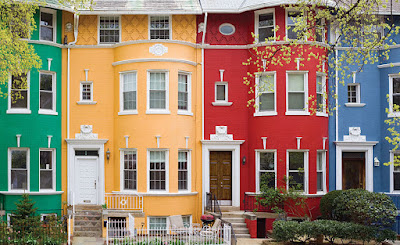Exploring Sustainable Solutions: Architectural Coatings for Eco-Friendly Buildings
 |
| Architectural Coatings |
In
the contemporary world, sustainability has become a pivotal concern in all
spheres of human activity, including architecture and construction. As the
global population burgeons and environmental challenges intensify, architects,
engineers, and designers are increasingly turning to eco-friendly solutions to
mitigate the adverse impact of urban development on the environment. One such
area of focus is architectural coatings, which play a crucial role in enhancing
the longevity, aesthetics, and environmental performance of buildings.
Architectural Coatings encompass a wide range of products, including paints, stains, sealers, and varnishes, used to protect and enhance the surfaces of buildings. Traditionally, these coatings have been associated with volatile organic compounds (VOCs) and other harmful chemicals, contributing to indoor air pollution and environmental degradation. However, with growing awareness of sustainability issues, the industry has witnessed a paradigm shift towards the development and adoption of eco-friendly coatings that minimize environmental impact without compromising on performance.
At the forefront of this shift are innovations in materials science and green chemistry, which have led to the development of low-VOC and zero-VOC coatings derived from renewable resources such as plant oils, natural resins, and recycled materials. These coatings not only reduce harmful emissions during application and throughout the lifespan of the building but also offer comparable or even superior performance in terms of durability, coverage, and color retention.
Furthermore, sustainable architectural coatings go beyond mere environmental considerations; they also contribute to the energy efficiency and thermal comfort of buildings. Cool roof coatings, for instance, reflect solar radiation and reduce heat absorption, thereby lowering indoor temperatures and decreasing the need for air conditioning. Similarly, insulating coatings can be applied to walls and roofs to enhance thermal resistance, reducing heat loss in winter and heat gain in summer, thus optimizing energy consumption and reducing greenhouse gas emissions.
In addition to their environmental and energy-saving benefits, sustainable architectural coatings offer architects and designers a versatile palette of colors and finishes to realize their creative vision while adhering to sustainable principles. From vibrant hues inspired by nature to textured finishes reminiscent of traditional craftsmanship, these coatings enable designers to enhance the visual appeal of buildings while respecting the surrounding ecosystem.
Moreover, the adoption of sustainable architectural coatings aligns with broader initiatives aimed at promoting green building practices and achieving sustainability certifications such as LEED (Leadership in Energy and Environmental Design) and BREEAM (Building Research Establishment Environmental Assessment Method). By specifying eco-friendly coatings in their projects, architects and developers can demonstrate their commitment to environmental stewardship and differentiate their buildings in an increasingly competitive market.
The exploration of sustainable solutions in architectural coatings represents a significant step towards creating eco-friendly buildings that are not only visually striking but also environmentally responsible and energy-efficient. By leveraging innovations in materials science, green chemistry, and design, architects and designers can transform the built environment while minimizing its ecological footprint. As the demand for sustainable buildings continues to rise, sustainable architectural coatings will play an increasingly vital role in shaping the cities of tomorrow.



Comments
Post a Comment